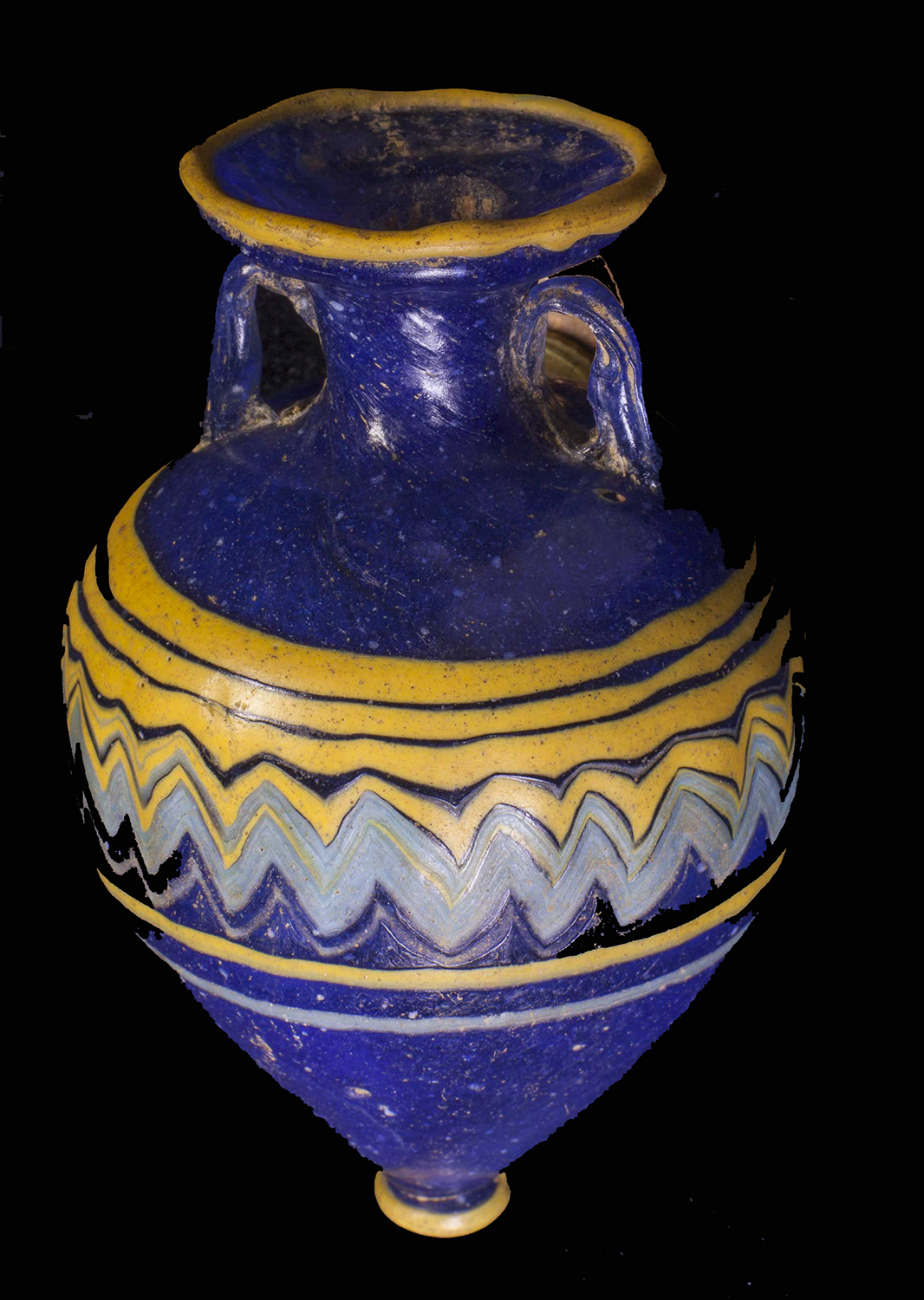
Moulded glass on core
6th-4th c. BC
Empúries (L’Escala – Alt Empordà)
The unguent or ointment containers are small deep-blue pieces decorated with zigzags and yellow and white and/or green parallel lines. They were the first glass containers to reach the northeastern Catalan coast.
We would not stray too far from reality if we imagine the impact they caused: the feeling of holding luxurious, fragile, exotic pieces that expressed the wealth and prestige of those who owned them. In addition, they contained high-value exotic personal care products, such as ointments and scented oils.
The opaque and odourless glass was the ideal material to contain these products. The shape of the container –small bottles with narrow necks– made it easy for them to be closed hermetically.
Currently, the exact provenance of these prestigious containers is not completely clear and for this reason a generic area of the eastern Mediterranean is proposed.
The technique with which these small containers were produced is called “modelling on a core”. This was the method used before the discovery of blowing glass, which did not appear until Roman times. The production of these pieces recalls the lost wax technique that was used with metal figures. The first step was to build a core in the shape of the desired jar (amphorisk, alabaster, aryballos, etc.) inspired by the shapes of Greek pottery. This core was made mainly of sand and clay, and was attached to a stem that acted as a handle. The core was coated with hot glass paste and then different coloured glass threads were added. Finally the handles, foot and mouth were added, according to the chosen model.
The example shown here is an amphoriskos dated between the 6th and 4th centuries BC and comes from the Greek town of Empúries.
